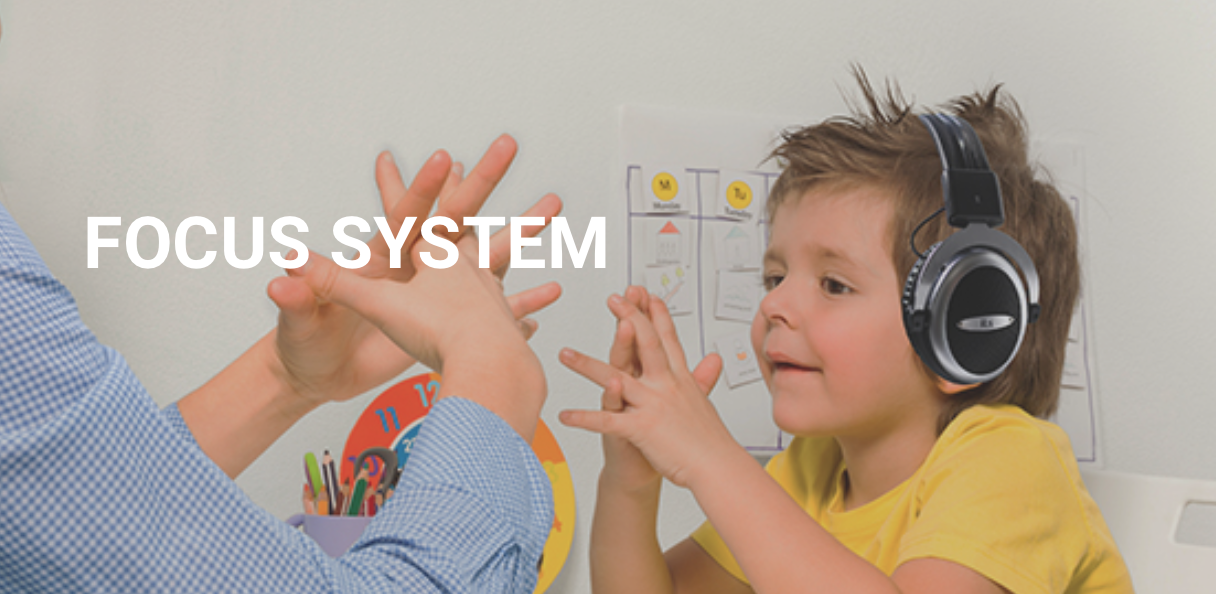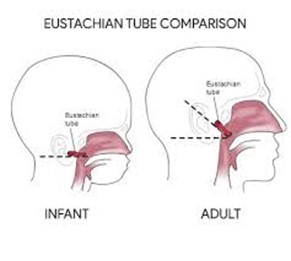Enlarged Adenoids Affect Your Hearing
Enlarged adenoids affect your hearing. When enlarged adenoids block eustachian tubes, fluids build up in your middle ear decreasing your ability to hear.
Enlarged Adenoids?
Your Moore Auditory-Visual Questionnaire Report will share the frequency and intensity of behavioral difficulties related to specific areas of concern improving communication with Cheri, professionals, doctors, and therapists.
Need Help?
The Moore Auditory-Visual Observation Activity Booklet teaches you what to observe and how to observe helping you recognize visual processing difficulties. Schedule a free phone consultation with Cheri to share your story and learn how Cheri can help.
It is an honor to work with Cheri Moore on her journey with auditory integration therapy. She has shown a consistent desire to go above and beyond in every aspect of her practice and training. Cheri’s quest for greater understanding and her thirst for knowledge are demonstrated daily. It is a pleasure to work with a professional who is so eager to learn and apply new information to help her clients reach their best possible outcomes.
Kathy J Harvey-Jones, MsEd, Audiology, BC-HIS
Poor ear, nose, and throat health negatively affect attention needed for listening. Then, listening difficulties make it more difficult to learn. Behaviors are clues helping you learn the full impact of difficulties.
Enlarged Adenoids and Hidden Difficulties
Enlarged adenoids contribute to many behaviors. Sometimes, behaviors are confused with attention deficit hyperactivity disorder. However, medication fails to improve attention because enlarged adenoids are still negatively affecting the person. A simplified explanation, enlarged adenoids interfere with breathing while asleep. While awake, they decrease how well someone hears. Both decrease attention. Researchers found that children, five to fourteen years of age, with enlarged adenoids have an increased risk of snoring, open-mouth breathing, and chronic congestion
Enlarged adenoids diminish hearing resulting in weaker stimulation along auditory neural pathways. Thus, individuals with enlarged adenoids have an increased risk of developing sound sensitivities.
Maintaining Benefits of Auditory Integration Training
The impact of enlarged adenoids is so significant, the hearing system is unable to maintain the benefits of auditory integration training. Strong and consistent sound energy must stimulate the brain.
After adenoid surgery, the eustachian tubes need about eight weeks to fully heal. Then, Cheri strongly recommends starting with auditory integration training to strengthen weak auditory neural pathways.
Are enlarged adenoids contributing to diminished hearing and auditory processing difficulties?

Overcoming CAPD with Autism
My daughter was diagnosed with autism and central auditory processing disorder (CAPD). We schooled her at home, and even with my background in teaching, it was very difficult. I would have to fight with her to make her begin her school work. While teaching her, she...
A Future for My Daughter: Diminishing L.D. / Sound Sensitivities
Ashylyn did not talk much when she was little and was shy about interacting with people. I sent her to a private Christian school for kindergarten hoping she would come out of her shell. Unfortunately, there were more problems than just shyness. I remember feeling...
CAPD Diagnosis at 21 years; Success with Hearing Aids and AIT
Finding out that my 21-year-old son had a hidden hearing loss (CAPD) was a relief. He is very intelligent. Not getting the right help was causing feelings of depression and hopelessness. Finally, an answer to the questions I have had for so long! He never really fit...
A Relieved Grandmother: CAPD Success with Hearing Aids
I was at my wit’s end when I met Cheri Moore. My oldest granddaughter, whom I had guardianship, had been tested for every possible psychological learning disability, including autism. She was prescribed medication, which did not seem to help. Still, no diagnosis. I...
A Mother’s Journey Into the World of Dyslexia
Diagnosing Dyslexia During the spring of 2007, I attended Dianne Craft’s conference where I learned that dyslexia affected the auditory processing center and the visual processing center. Perhaps I had found help for my daughter’s reading and spelling struggles. She...

Full Impact of Snoring with Enlarged Adenoids
When a child or teen snores, there are additional hidden concerns. Have you ever observed your loved one’s patterns of breathing while asleep. Years ago, when my husband breathing pattern changed while sleeping, I felt thankful he did not snore. Now, I feel concern. While sleeping, I now understand the brain is taking a break. He is subconsciously holding his breath. Likewise, when a person briefly stops snoring, the person is most likely holding their breath. Lack of oxygen to the brain creates many of the behavioral characteristics shared below.
When there are no enlarged adnoids, a pulmonary sleep specialist orders a sleep study test. According to the Mayo Clinic, snoring is associated with numerous conditions.
Today, insurance companies require proof of the need to remove adenoids. When adenoids are enlarged, a sleep study test is ordered by an ear, nose and throat doctor.
If you observe any of the following behaviors, take notes. Most importantly, go with your loved one to doctor appointments and share your observations.

While sleeping, does the person
- Breathe in a strange pattern
- Seem to stop breathing, gasp, cough, or choke
- Move often
- Wake up complaining their chest hurts
- Disturb covers until they are off the person
In the morning, does the person
- Wake up tired, grumpy, irritable
- Sound hoarse
- Need to cough up or spit out fluids
- Share their throat hurts
- Complain of a headache
During the day, does the person look
- Sleepy or falls asleep
- Absent-minded, daydreams, lacks attention
- Confused, unable to recall what just heard
- Irritated while listening and noise level increases
- Intense while trying to concentrate
Informed Decisions
When sleep studies are completed, parents are asked what they want to do. To make an educated decision, it is very important for parents to understand the full impact of enlarged adenoids. When sleep studies show borderline disturbance of sleep, it is equally important to know how their child’s hearing is affecting the development of auditory processing skills and tolerance to sounds. Completing a Moore Auditory-Visual Questionnaire provides you with a report sharing the intensity and frequency of behaviors associated with sound intolerance, hearing loss, and auditory processing difficulties.

Age & Eustachian Tube Position
When a person sleeps, enlarged adenoids block eustachian tubes. Thus, fluid builds-up in the middle ear. Depending on age and size of adenoids, the amount of fluid varies. In toddlers and preschoolers, the neck is short. As a result, eustachian tubes have a more horizontal position.
When fluid sits in eustachian tubes blocked by enlarged adenoids, bacteria grow. The end result, an increased risk of ear infections and inflammed eustachian tubes.
Hidden Concerns of Enlarged Adenoids While Awake
Enlarged adenoids create difficulties while the person is awake. Researchers found diminished hearing in research participants. Diminish hearing negatively affects attention, listening, learning, and emotional health.
Even more concerning, researchers found that research participants with enlarged adenoids were eight times more likely to experience four or more ear infections. In a different study, researchers found that chronic ear infections contribute to auditory processing difficulties, under-development in the brain.
Poor Eustachian Tube Health
Poor eustachian tube health is compounded when an individual with enlarged adenoids becomes sick. When sick, research participants experienced a greater degree of hearing loss for prolonged periods of time. Enlarged adenoids trap infected fluids irritating the lining of eustachian tubes.
After an ear infection is finally gone, decreased hearing difficulties continue. It can take another month to resolve inflammation in the eustachian tubes. Imagine the consequences when parents, teachers, and even the person affected are unaware of hearing loss explains learning difficulties, listening, and behaviors.
During infancy and toddler years, ear infections followed by healing of eustachian tubes can take two months. Consequently, auditory-visual-motor skills are at risk for developmental delays. Strong, consistent sensory stimulation to the brain is critical during the early years of brain development.
Distorted Sounds & Sound Intolerance
While children are awake, fluid drains out of eustachian tubes. Unfortunately, inflammation in the eustachian tubes requires consistent ear health during the day and night to resolve inflammation.
Sadly, chronic inflammation in the eustachian tubes distorts sounds. When chronic, under-stimulation of the brain increases the risk of sound intolerance and auditory processing difficulties.
Food Sensitivites & Allergies
Improve Your Health Blog, Six Foods Contributing to Inflammation of Eustachian Tubes
When a person has unknown food sensitivities or allergies, researchers found an increased risk of eustachian tube inflammation. Improve Your Health Blogs shares how to identify foods and steps to take towards improved ear health. Additional information is shared about the full impact of food sensitivities and allergies on the gut and brain.
As ear health improves, so does overall health. The result, some clients seem less irritable and more patient. A few clients experienced significant improvements in self-control and listening with comprehension.

Research Shows Negative Impact of Enlarged Adenoids
Haapaniemi (1995) found that participants with normal-sized to medium-sized adenoids experienced the behavioral characteristics below only 7% to 9.8% of the time while 25% (133 children) of 663 children, seven to 14 years of age, with enlarged adenoids experienced the following behavioral characteristics 14% to 30% of the time:
- Open-mouth breathing
- Snoring with first graders being the most affected age group
- Chronic congestion (blocked nasal pathway) also called sinusitis or rhinitis
- Decreased hearing by 1.1 to 4.2 decibels depending on size of enlarged adenoids
- Eight times more likely to have experienced four or more ear infections
Statistically significant differences between the two control groups showing an increased risk for decreased sound energy reaching the cochlea:
- Greater hearing loss during a common cold (.0003)
- Abnormal color and position of ear drum (tympanic membrane .0001)
- Lower pressure (60 to 70mm H2O) in the middle ear when compared to participants with typical-sized adenoids.
Summary
Overall, enlarged adenoids increase the risk of snoring contributing to decrease oxygen to the brain and decreasing the quality of sleep. Attention is negatively affected by fatigue and diminished hearing. The increased risk of ear infections negatively impact brain development. Researchers found that chronic ear infections disrupt development of auditory processing skills within the brain.

Overcoming CAPD with Autism
My daughter was diagnosed with autism and central auditory processing disorder (CAPD). We schooled her at home, and even with my background in teaching, it was very difficult. I would have to fight with her to make her begin her school work. While teaching her, she...
A Future for My Daughter: Diminishing L.D. / Sound Sensitivities
Ashylyn did not talk much when she was little and was shy about interacting with people. I sent her to a private Christian school for kindergarten hoping she would come out of her shell. Unfortunately, there were more problems than just shyness. I remember feeling...
CAPD Diagnosis at 21 years; Success with Hearing Aids and AIT
Finding out that my 21-year-old son had a hidden hearing loss (CAPD) was a relief. He is very intelligent. Not getting the right help was causing feelings of depression and hopelessness. Finally, an answer to the questions I have had for so long! He never really fit...
A Relieved Grandmother: CAPD Success with Hearing Aids
I was at my wit’s end when I met Cheri Moore. My oldest granddaughter, whom I had guardianship, had been tested for every possible psychological learning disability, including autism. She was prescribed medication, which did not seem to help. Still, no diagnosis. I...
A Mother’s Journey Into the World of Dyslexia
Diagnosing Dyslexia During the spring of 2007, I attended Dianne Craft’s conference where I learned that dyslexia affected the auditory processing center and the visual processing center. Perhaps I had found help for my daughter’s reading and spelling struggles. She...


